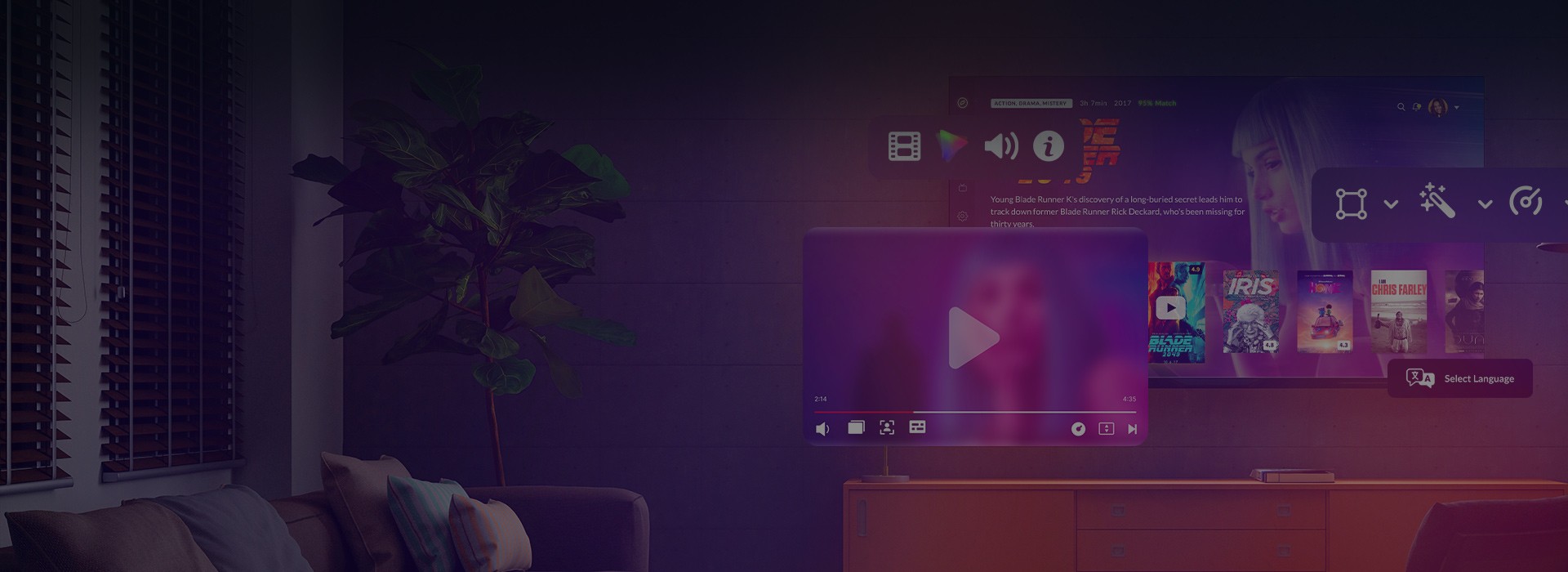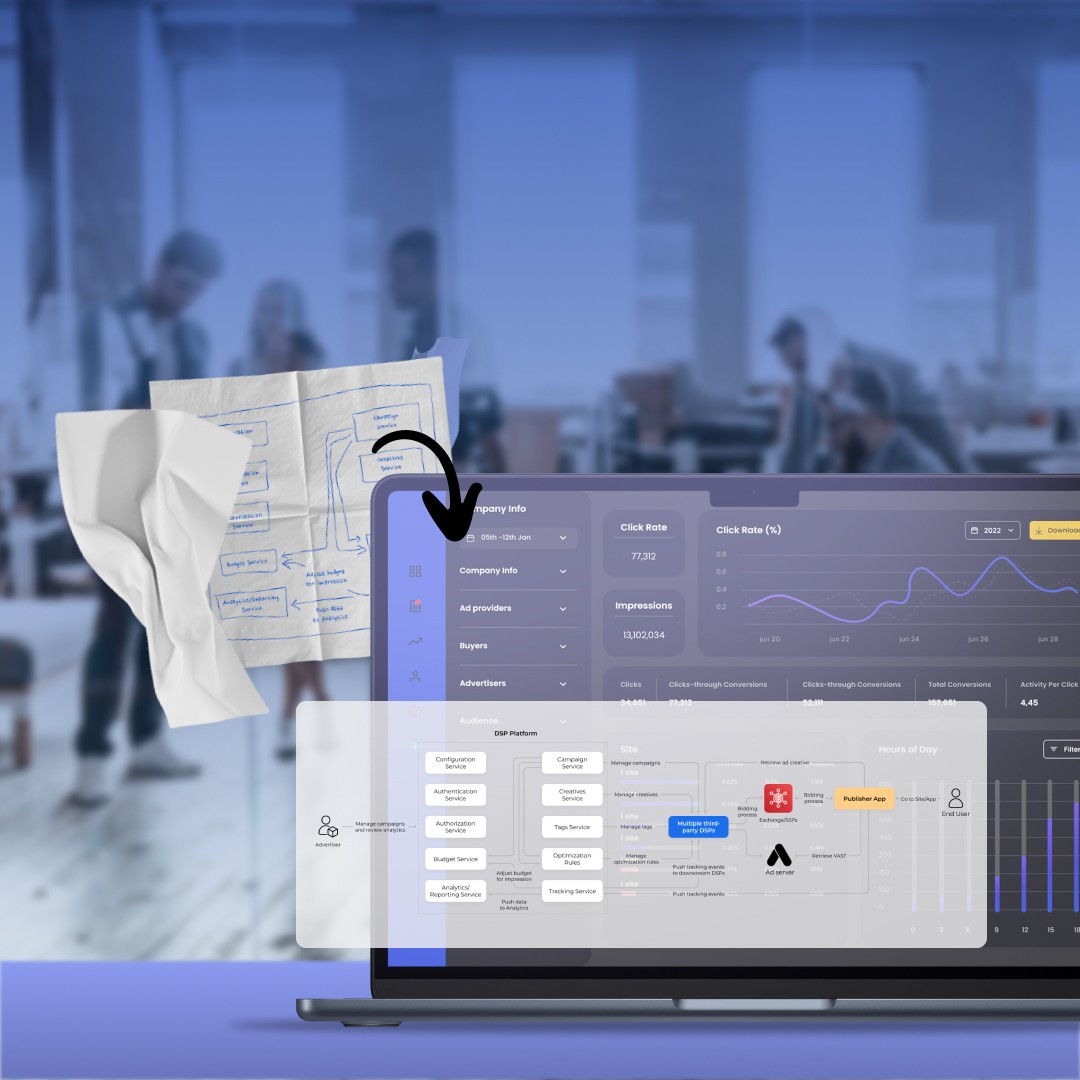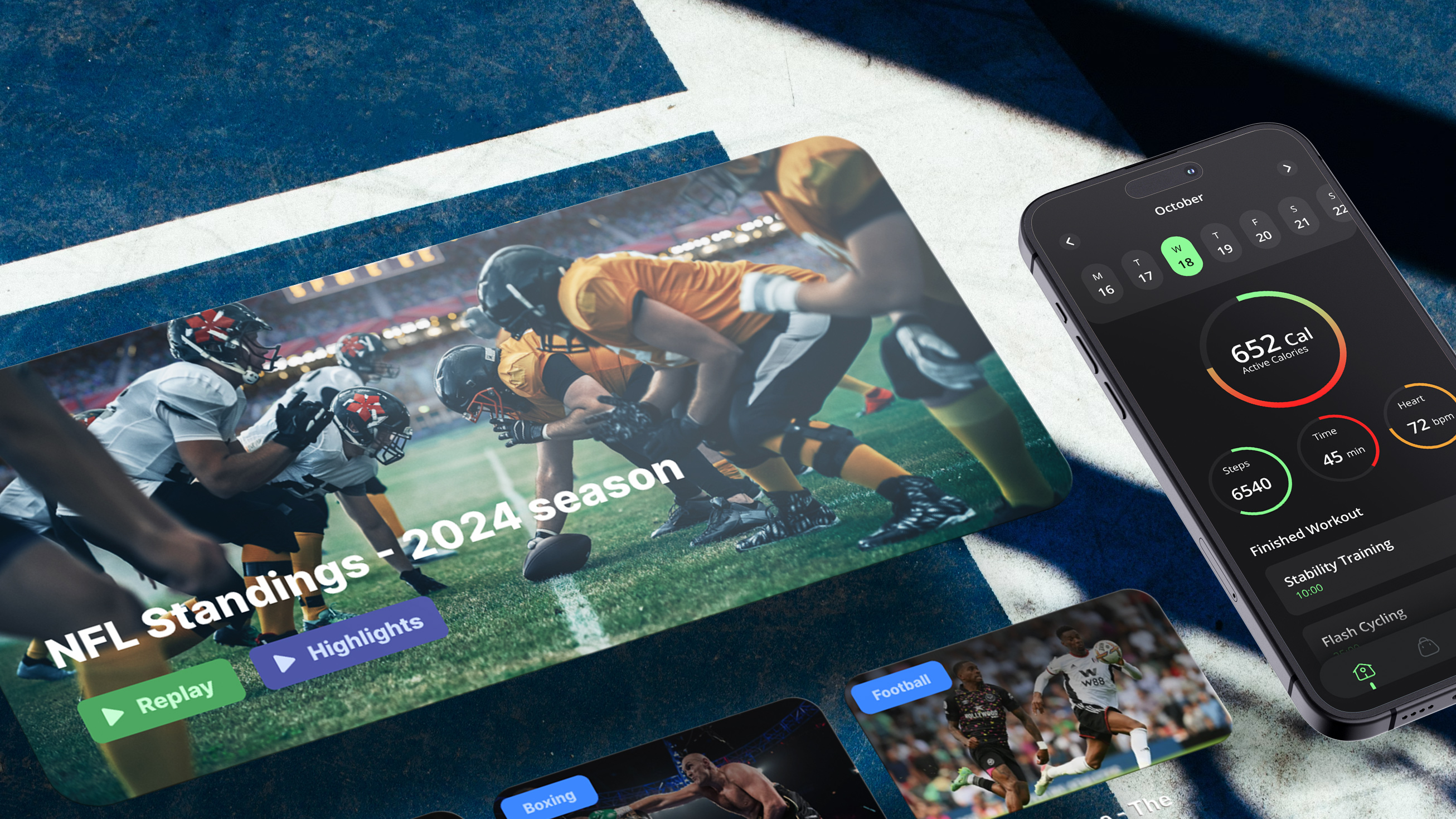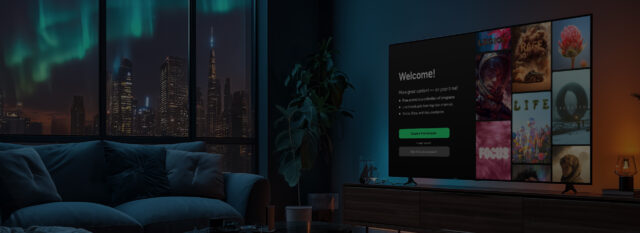Inside ATSC 3.0 features: what’s behind the broadcast standard
While most viewers focus on the sleek interfaces and user-friendly experiences in OTT, there’s also a sophisticated engine under the hood making it all possible on broadcast TV, the ATSC 3.0 standard.
In one of our earlier blog posts, we unpacked the technical leap ATSC 3.0 represents over its predecessor, ATSC 1.0. We won’t rehash those details here — feel free to explore that post for a deeper dive — but today, we’re zooming in on some standout UI features that may showcase ATSC 3.0’s full potential.
If ATSC 1.0 were the seasoned elder son — reliable, familiar, and built for a different era — then ATSC 3.0 would be the ambitious next-generation son: faster, smarter, and brimming with potential. Where the former laid the foundation, the latter is poised to take broadcast technology to a whole new level.
Here’s a quick look at what may make ATSC 3.0 a true over-the-air broadcasting shaker:
- IP-based architecture — Built on the same internet protocol backbone that powers today’s top streaming services, bringing broadcast TV into the digital-first age.
- Hybrid OTA + OTT delivery — Seamlessly fuses over-the-air and over-the-top content, bringing more interactivity to media consumption.
- Enhanced audio & video — Delivers ultra-clear video resolutions and immersive, theater-like sound that brings content to life.
- Future-proof design — Built with adaptability in mind, allowing broadcasters to evolve with emerging tech without needing a total overhaul.
The adoption of ATSC 3.0 for television signal distribution has already gained significant momentum. Once broadcasters recognized the standard’s impressive efficiency — delivering superior image and sound quality while optimizing the use of the radio-frequency spectrum — they began advancing its potential further through the development of interactive features, paving the way for more dynamic and personalized viewing experiences.
The UI dilemma — standardization vs. flexibility for networks and affiliates
Broadcasters have already made considerable strides, with most major players having launched their broadcaster apps as part of early production trials. While some opted for near-default implementations provided by Run3TV, others — like NBCUniversal — pursued more distinctive, customized extensions that set them apart. After gaining experience with these initial deployments and confirming the reliability of the underlying ATSC 3.0 protocol, the industry began grappling with more complex and nuanced challenges. One such dilemma serves as a prime example of the evolving strategic considerations now at play.
One of the key NextGen TV debates emerging from NAB 2025 this year revolves around a critical and far-reaching dilemma: should network-affiliated broadcaster apps adopt standardized user interfaces, or should they allow for flexible, station-specific user experiences?
This tension was highlighted in discussions involving major industry players, which are actively advocating for a unified, standardized UI. Their pitch is straightforward: a unified user experience across all affiliated stations reduces friction for the viewer.
But not everyone agrees. The others, for example, argue for maximum flexibility. Local and network broadcasters, they claim, need the freedom to tailor apps to their specific markets, audiences, and brand strategies. A one-size-fits-all approach may work for UI design but could stifle innovation and local relevance — both of which are crucial to retaining and growing audiences in a fragmented media landscape.
There’s also a third perspective — one that questions the very premise of standardization. If every station looks and behaves the same, what happens to differentiation? How can networks compete on innovation, interactivity, and engagement if they are locked into a rigid UI framework? Standardization may ensure consistency, but it could come at the cost of creativity and viewer loyalty. However, the fourth consideration also raises critical questions regarding the UI/UX flexibility — specifically, whether it’s acceptable or user-friendly for viewers to experience interface changes when switching between channels.
These debates represent not just a technical challenge, but strategic crossroads. The broadcast industry has to decide: is it better to prioritize consistency and familiarity, or to embrace diversity and experimentation? The outcome of this choice will shape how audiences experience TV in the next era — and whether broadcasters can truly thrive in an app-first world.
While the conversation is underway, the initial priority is to mandate the transition to ATSC 3.0. Broadcasters have taken a leading role in driving the legal adoption of the standard, also actively demonstrating to the industry what the future of broadcasting could look like with ATSC 3.0
Bringing streaming-level UX to over-the-air with ATSC 3.0
While many in the industry are looking to enhance Run3TV’s basic app with additional features, we set out to challenge this perception. In collaboration with our R&D team — led by Delivery Partnerships and Sales Engineering Manager Oleg Stepanyuk — we’ve worked to push the boundaries of what NextGen TV can deliver. Our goal: to adapt the rich, on-demand, and personalized experiences of OTT streaming into the ATSC 3.0 environment.
Bridging the gap: traditional linear TV vs. ATSC 3.0-based one
For decades, linear television has offered viewers a passive, one-way experience. Content is broadcast on a fixed schedule, and engagement is limited to what is presented on screen. Viewer interaction is essentially non-existent, and personalization is out of reach.
ATSC 3.0 changes this model.
Built on an IP-based infrastructure, ATSC 3.0 merges the reliability, accessibility, and efficiency of broadcast with the flexibility of broadband. This hybrid approach opens the door to interactive content delivery and viewer personalization that mirrors the functionality of popular OTT platforms.
As we explored the capabilities of ATSC 3.0, we identified several foundational features that broadcasters can implement right away to enhance viewer engagement:
Video on-demand (VOD) content
Benefits for viewers:
- Watch content on their own schedule — no need to follow a rigid broadcast timetable
- Access a broader range of content (past episodes, special reports, behind-the-scenes)
- Improved convenience and control over the viewing experience
Benefits for broadcasters:
- Increased viewer engagement and time spent on platform
- Ability to repurpose and monetize existing content libraries
- More opportunities for ad placements and sponsorships in VOD content
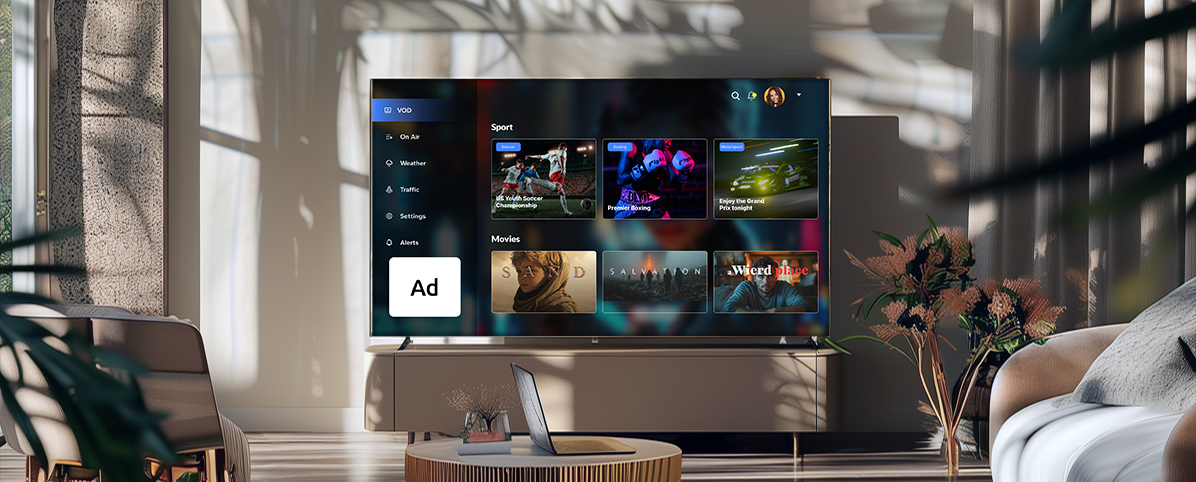
Live “On-Air” interactivity
Benefits for viewers:
- Engage actively with content through voting, polls, or additional content layers
- Greater immersion during live events (sports, reality TV, news coverage)
- Sense of participation and community during real-time broadcasts
Benefits for broadcasters:
- Boosts viewer retention during live broadcasts
- Creates new revenue streams through sponsored interactivity
- Enables valuable real-time data collection on audience preferences and behavior

Targeted advertising
Benefits for viewers:
- Ads are more relevant and less intrusive, improving overall viewing experience
- Reduced ad fatigue by seeing fewer, more personalized messages
- Potential for viewer-controlled ad experiences (choose-your-own-adventure formats, etc.)
Benefits for broadcasters:
- Higher CPMs (cost per mille) due to improved ad targeting
- Stronger ROI for advertisers, making the platform more attractive
- Insight-rich data to refine audience segmentation and campaign performance
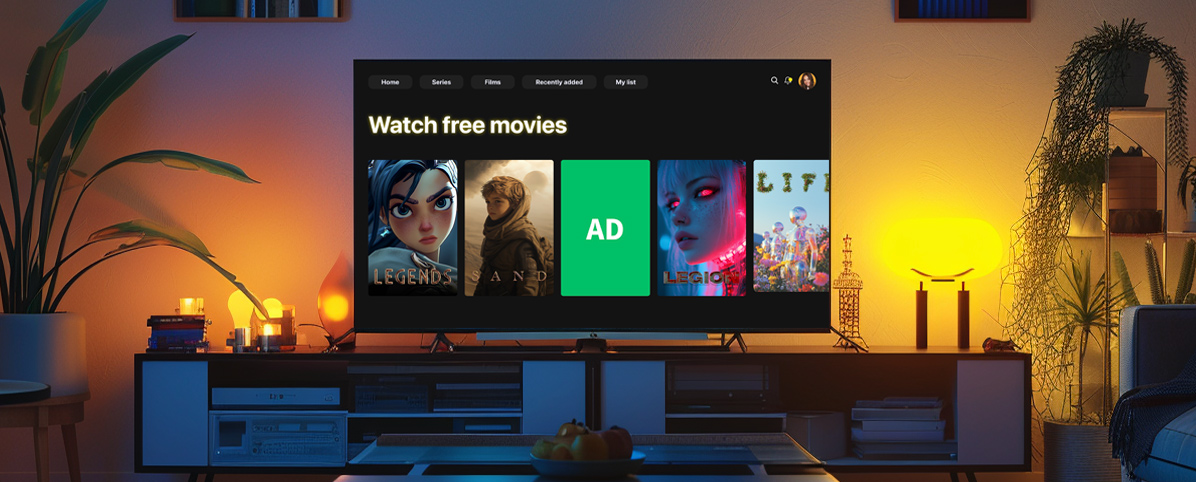
Informational widgets (weather, traffic, news)
Benefits for viewers:
- Instant access to localized, real-time updates without switching channels
- Context-aware enhancements (e.g., weather during travel segments, traffic during news)
- Streamlined experience that combines entertainment and utility
Benefits for broadcasters:
- Increase viewer stickiness by offering added value
- Opportunities for local sponsorships (e.g., local businesses sponsoring traffic updates)
- Differentiates the broadcaster’s offering in a competitive market

How can we resolve the dilemma faced by networks and affiliates — balancing brand differentiation with a seamless user experience?
Users naturally expect a seamless experience and may become frustrated when a broadcaster app launched at 5 PM — during local station programming — differs significantly from the one accessed at 6 PM, when national network content takes over. To avoid this disconnect, alignment between local stations and national networks becomes essential. Ideally, both should agree on a unified approach to ensure consistency across transitions, which illustrates just how harmonious the experience can be when coordination is prioritized.
Nothing communicates this balance more effectively than strong visual design. We build a consistent, intuitive UX across both networks and affiliates within a streamlined broadcaster app, while enabling customized branded experiences. This approach ensures brand uniqueness without compromising usability, effectively satisfying both sides of the equation.
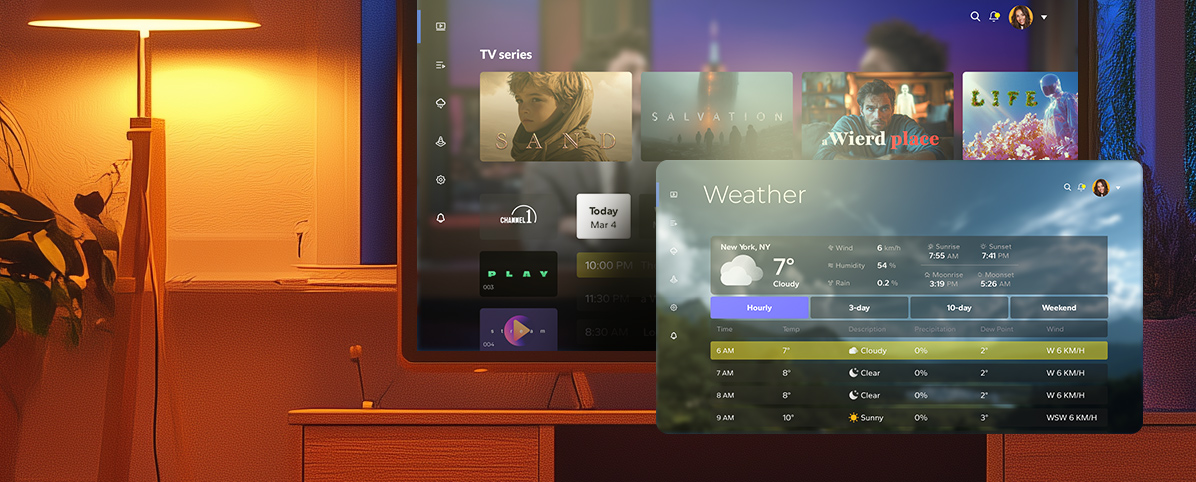
Final remarks
While much of the industry is still watching and waiting, forward-thinking leaders are already embracing NextGen TV. Whether to build a custom NextGen TV broadcaster app or follow the white-label standardized way — that’s the strategic decision you need to make today. It’s a given.
But making the leap means understanding the ROI of ATSC 3.0 implementation and proactively aligning it with your broadcasting strategy. You don’t have to navigate this alone — partner with experts to move forward with confidence.
NextGen TV: to launch now or wait?
If you’re grappling with this question, you’re not alone. As Run3TV’s anchor development partner, Oxagile is here to help you navigate the transition with confidence.
Let’s build your new TV broadcasting offering — together.

